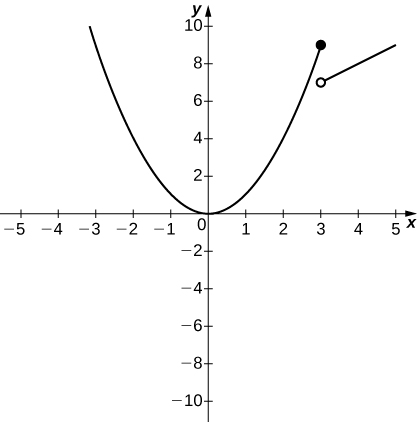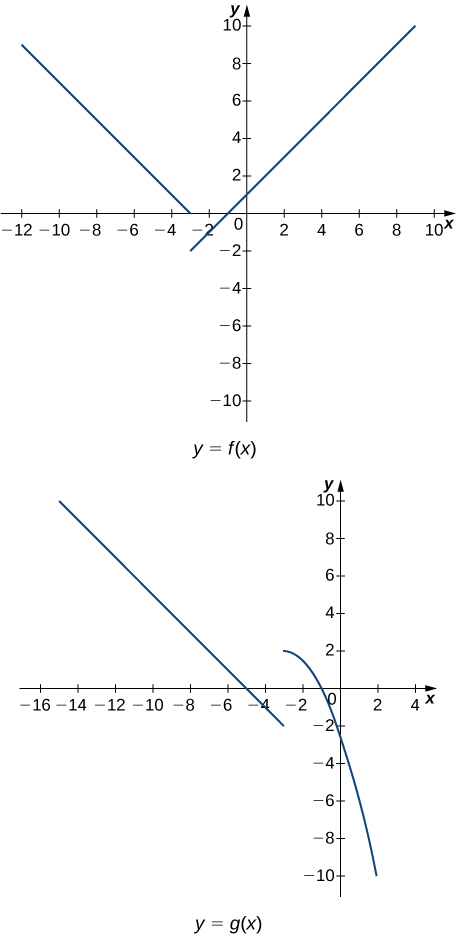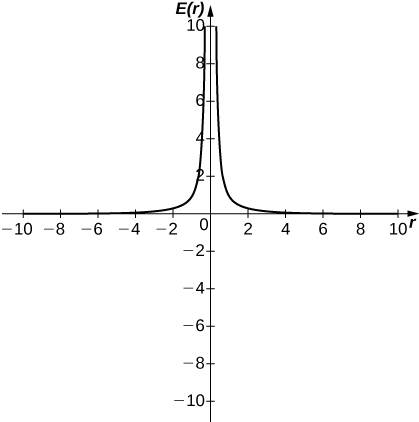2.4E: Exercises for Section 2.3
- Page ID
- 25927
\( \newcommand{\vecs}[1]{\overset { \scriptstyle \rightharpoonup} {\mathbf{#1}} } \)
\( \newcommand{\vecd}[1]{\overset{-\!-\!\rightharpoonup}{\vphantom{a}\smash {#1}}} \)
\( \newcommand{\id}{\mathrm{id}}\) \( \newcommand{\Span}{\mathrm{span}}\)
( \newcommand{\kernel}{\mathrm{null}\,}\) \( \newcommand{\range}{\mathrm{range}\,}\)
\( \newcommand{\RealPart}{\mathrm{Re}}\) \( \newcommand{\ImaginaryPart}{\mathrm{Im}}\)
\( \newcommand{\Argument}{\mathrm{Arg}}\) \( \newcommand{\norm}[1]{\| #1 \|}\)
\( \newcommand{\inner}[2]{\langle #1, #2 \rangle}\)
\( \newcommand{\Span}{\mathrm{span}}\)
\( \newcommand{\id}{\mathrm{id}}\)
\( \newcommand{\Span}{\mathrm{span}}\)
\( \newcommand{\kernel}{\mathrm{null}\,}\)
\( \newcommand{\range}{\mathrm{range}\,}\)
\( \newcommand{\RealPart}{\mathrm{Re}}\)
\( \newcommand{\ImaginaryPart}{\mathrm{Im}}\)
\( \newcommand{\Argument}{\mathrm{Arg}}\)
\( \newcommand{\norm}[1]{\| #1 \|}\)
\( \newcommand{\inner}[2]{\langle #1, #2 \rangle}\)
\( \newcommand{\Span}{\mathrm{span}}\) \( \newcommand{\AA}{\unicode[.8,0]{x212B}}\)
\( \newcommand{\vectorA}[1]{\vec{#1}} % arrow\)
\( \newcommand{\vectorAt}[1]{\vec{\text{#1}}} % arrow\)
\( \newcommand{\vectorB}[1]{\overset { \scriptstyle \rightharpoonup} {\mathbf{#1}} } \)
\( \newcommand{\vectorC}[1]{\textbf{#1}} \)
\( \newcommand{\vectorD}[1]{\overrightarrow{#1}} \)
\( \newcommand{\vectorDt}[1]{\overrightarrow{\text{#1}}} \)
\( \newcommand{\vectE}[1]{\overset{-\!-\!\rightharpoonup}{\vphantom{a}\smash{\mathbf {#1}}}} \)
\( \newcommand{\vecs}[1]{\overset { \scriptstyle \rightharpoonup} {\mathbf{#1}} } \)
\( \newcommand{\vecd}[1]{\overset{-\!-\!\rightharpoonup}{\vphantom{a}\smash {#1}}} \)
\(\newcommand{\avec}{\mathbf a}\) \(\newcommand{\bvec}{\mathbf b}\) \(\newcommand{\cvec}{\mathbf c}\) \(\newcommand{\dvec}{\mathbf d}\) \(\newcommand{\dtil}{\widetilde{\mathbf d}}\) \(\newcommand{\evec}{\mathbf e}\) \(\newcommand{\fvec}{\mathbf f}\) \(\newcommand{\nvec}{\mathbf n}\) \(\newcommand{\pvec}{\mathbf p}\) \(\newcommand{\qvec}{\mathbf q}\) \(\newcommand{\svec}{\mathbf s}\) \(\newcommand{\tvec}{\mathbf t}\) \(\newcommand{\uvec}{\mathbf u}\) \(\newcommand{\vvec}{\mathbf v}\) \(\newcommand{\wvec}{\mathbf w}\) \(\newcommand{\xvec}{\mathbf x}\) \(\newcommand{\yvec}{\mathbf y}\) \(\newcommand{\zvec}{\mathbf z}\) \(\newcommand{\rvec}{\mathbf r}\) \(\newcommand{\mvec}{\mathbf m}\) \(\newcommand{\zerovec}{\mathbf 0}\) \(\newcommand{\onevec}{\mathbf 1}\) \(\newcommand{\real}{\mathbb R}\) \(\newcommand{\twovec}[2]{\left[\begin{array}{r}#1 \\ #2 \end{array}\right]}\) \(\newcommand{\ctwovec}[2]{\left[\begin{array}{c}#1 \\ #2 \end{array}\right]}\) \(\newcommand{\threevec}[3]{\left[\begin{array}{r}#1 \\ #2 \\ #3 \end{array}\right]}\) \(\newcommand{\cthreevec}[3]{\left[\begin{array}{c}#1 \\ #2 \\ #3 \end{array}\right]}\) \(\newcommand{\fourvec}[4]{\left[\begin{array}{r}#1 \\ #2 \\ #3 \\ #4 \end{array}\right]}\) \(\newcommand{\cfourvec}[4]{\left[\begin{array}{c}#1 \\ #2 \\ #3 \\ #4 \end{array}\right]}\) \(\newcommand{\fivevec}[5]{\left[\begin{array}{r}#1 \\ #2 \\ #3 \\ #4 \\ #5 \\ \end{array}\right]}\) \(\newcommand{\cfivevec}[5]{\left[\begin{array}{c}#1 \\ #2 \\ #3 \\ #4 \\ #5 \\ \end{array}\right]}\) \(\newcommand{\mattwo}[4]{\left[\begin{array}{rr}#1 \amp #2 \\ #3 \amp #4 \\ \end{array}\right]}\) \(\newcommand{\laspan}[1]{\text{Span}\{#1\}}\) \(\newcommand{\bcal}{\cal B}\) \(\newcommand{\ccal}{\cal C}\) \(\newcommand{\scal}{\cal S}\) \(\newcommand{\wcal}{\cal W}\) \(\newcommand{\ecal}{\cal E}\) \(\newcommand{\coords}[2]{\left\{#1\right\}_{#2}}\) \(\newcommand{\gray}[1]{\color{gray}{#1}}\) \(\newcommand{\lgray}[1]{\color{lightgray}{#1}}\) \(\newcommand{\rank}{\operatorname{rank}}\) \(\newcommand{\row}{\text{Row}}\) \(\newcommand{\col}{\text{Col}}\) \(\renewcommand{\row}{\text{Row}}\) \(\newcommand{\nul}{\text{Nul}}\) \(\newcommand{\var}{\text{Var}}\) \(\newcommand{\corr}{\text{corr}}\) \(\newcommand{\len}[1]{\left|#1\right|}\) \(\newcommand{\bbar}{\overline{\bvec}}\) \(\newcommand{\bhat}{\widehat{\bvec}}\) \(\newcommand{\bperp}{\bvec^\perp}\) \(\newcommand{\xhat}{\widehat{\xvec}}\) \(\newcommand{\vhat}{\widehat{\vvec}}\) \(\newcommand{\uhat}{\widehat{\uvec}}\) \(\newcommand{\what}{\widehat{\wvec}}\) \(\newcommand{\Sighat}{\widehat{\Sigma}}\) \(\newcommand{\lt}{<}\) \(\newcommand{\gt}{>}\) \(\newcommand{\amp}{&}\) \(\definecolor{fillinmathshade}{gray}{0.9}\)In exercises 1 - 4, use the limit laws to evaluate each limit. Justify each step by indicating the appropriate limit law(s).
1) \(\displaystyle \lim_{x→0}\,(4x^2−2x+3)\)
- Answer
-
Use constant multiple law and difference law:
\(\displaystyle \lim_{x→0}\,(4x^2−2x+3)=4\lim_{x→0}x^2−2\lim_{x→0}x+\lim_{x→0}3=0 + 0 + 3=3\)
2) \(\displaystyle \lim_{x→1}\frac{x^3+3x^2+5}{4−7x}\)
3) \(\displaystyle \lim_{x→−2}\sqrt{x^2−6x+3}\)
- Answer
- Use root law: \(\displaystyle \lim_{x→−2}\sqrt{x^2−6x+3}=\sqrt{\lim_{x→−2}(x^2−6x+3)}=\sqrt{19}\)
4) \(\displaystyle \lim_{x→−1}(9x+1)^2\)
In exercises 5 - 10, use direct substitution to evaluate the limit of each continuous function.
5) \(\displaystyle \lim_{x→7}x^2\)
- Answer
- \(\displaystyle \lim_{x→7}x^2\;=\;49\)
6) \(\displaystyle \lim_{x→−2}(4x^2−1)\)
7) \(\displaystyle \lim_{x→0}\frac{1}{1+\sin x}\)
- Answer
- \(\displaystyle \lim_{x→0}\frac{1}{1+\sin x}\;=\;1\)
8) \(\displaystyle \lim_{x→2}e^{2x−x^2}\)
9) \(\displaystyle \lim_{x→1}\frac{2−7x}{x+6}\)
- Answer
- \(\displaystyle \lim_{x→1}\frac{2−7x}{x+6}\;=\;−\frac{5}{7}\)
10) \(\displaystyle \lim_{x→3}\ln e^{3x}\)
In exercises 11 - 20, use direct substitution to show that each limit leads to the indeterminate form \(0/0\). Then, evaluate the limit analytically.
11) \(\displaystyle \lim_{x→4}\frac{x^2−16}{x−4}\)
- Answer
- \(\displaystyle \text{When }x = 4, \quad\frac{x^2−16}{x−4}=\frac{16−16}{4−4}=\frac{0}{0};\)
then, \(\displaystyle \lim_{x→4}\frac{x^2−16}{x−4}= \lim_{x→4}\frac{(x+4)(x−4)}{x−4}=\lim_{x→4}(x+4) = 4+4 =8\)
12) \(\displaystyle \lim_{x→2}\frac{x−2}{x^2−2x}\)
13) \(\displaystyle \lim_{x→6}\frac{3x−18}{2x−12}\)
- Answer
- \(\displaystyle \text{When }x = 6, \quad\frac{3x−18}{2x−12}=\frac{18−18}{12−12}=\frac{0}{0};\)
then, \(\displaystyle \lim_{x→6}\frac{3x−18}{2x− 12}=\lim_{x→6}\frac{3(x−6)}{2(x−6)}=\lim_{x→6}\frac{3}{2}=\frac{3}{2}\)
14) \(\displaystyle \lim_{h→0}\frac{(1+h)^2−1}{h}\)
15) \(\displaystyle \lim_{t→9}\frac{t−9}{\sqrt{t}−3}\)
- Answer
- \(\displaystyle \text{When }t = 9, \quad\frac{t−9}{\sqrt{t}−3}=\frac{9−9}{3−3}=\frac{0}{0};\)
then, \(\displaystyle \lim_{t→9}\frac{t−9}{\sqrt{t}−3} =\lim_{t→9}\frac{t−9}{\sqrt{t}−3}\frac{\sqrt{t}+3}{\sqrt{t}+3}=\lim_{t→9}\frac{(t−9)(\sqrt{t}+3)}{t - 9}=\lim_{t→9}(\sqrt{t}+3)=\sqrt{9}+3=6\)
16) \(\displaystyle \lim_{h→0}\frac{\dfrac{1}{a+h}−\dfrac{1}{a}}{h}\), where \(a\) is a real-valued constant
17) \(\displaystyle \lim_{θ→π}\frac{\sin θ}{\tan θ}\)
- Answer
- \(\displaystyle \text{When }θ = π, \quad\frac{\sin θ}{\tan θ}=\frac{\sin π}{\tan π}=\frac{0}{0};\)
then, \(\displaystyle \lim_{θ→π}\frac{\sin θ}{\tan θ}=\lim_{θ→ π}\frac{\sin θ}{\frac{\sin θ}{\cos θ}}=\lim_{θ→π}\cos θ=\cos π=−1\)
18) \(\displaystyle \lim_{x→1}\frac{x^3−1}{x^2−1}\)
19) \(\displaystyle \lim_{x→1/2}\frac{2x^2+3x−2}{2x−1}\)
- Answer
- \(\displaystyle \text{When }x=1/2, \quad\frac{2x^2+3x−2}{2x−1}=\frac{\frac{1}{2}+\frac{3}{2}−2}{1−1}=\frac{0}{0};\)
then, \(\displaystyle \lim_{x→ 1/2}\frac{2x^2+3x−2}{2x−1}=\lim_{x→1/2}\frac{(2x−1)(x+2)}{2x−1}=\lim_{x→1/2}(x+2)=\frac{1}{2}+2=\frac{5}{2}\)
20) \(\displaystyle \lim_{x→−3}\frac{\sqrt{x+4}−1}{x+3}\)
In exercises 21 - 24, use direct substitution to obtain an undefined expression. Then, use the method used in Example 9 of this section to simplify the function and determine the limit.
21) \(\displaystyle \lim_{x→−2^−}\frac{2x^2+7x−4}{x^2+x−2}\)
- Answer
- \(−∞\)
22) \(\displaystyle \lim_{x→−2^+}\frac{2x^2+7x−4}{x^2+x−2}\)
23) \(\displaystyle \lim_{x→1^−}\frac{2x^2+7x−4}{x^2+x−2}\)
- Answer
- \(−∞\)
24) \(\displaystyle \lim_{x→1^+}\frac{2x^2+7x−4}{x^2+x−2}\)
In exercises 25 - 32, assume that \(\displaystyle \lim_{x→6}f(x)=4,\quad \lim_{x→6}g(x)=9\), and \(\displaystyle \lim_{x→6}h(x)=6\). Use these three facts and the limit laws to evaluate each limit.
25) \(\displaystyle \lim_{x→6}2f(x)g(x)\)
- Answer
- \(\displaystyle \lim_{x→6}2f(x)g(x)=2\left(\lim_{x→6}f(x)\right)\left(\lim_{x→6}g(x)\right)=2 (4)(9)=72\)
26) \(\displaystyle \lim_{x→6}\frac{g(x)−1}{f(x)}\)
27) \(\displaystyle \lim_{x→6}\left(f(x)+\frac{1}{3}g(x)\right)\)
- Answer
- \(\displaystyle \lim_{x→6}\left(f(x)+\frac{1}{3}g(x)\right)=\lim_{x→6}f(x)+\frac{1}{3}\lim_{x→6}g(x)=4+\frac{1}{3}(9)=7\)
28) \(\displaystyle \lim_{x→6}\frac{\big(h(x)\big)^3}{2}\)
29) \(\displaystyle \lim_{x→6}\sqrt{g(x)−f(x)}\)
- Answer
- \(\displaystyle \lim_{x→6}\sqrt{g(x)−f(x)}=\sqrt{\lim_{x→6}g(x)−\lim_{x→6}f(x)}=\sqrt{9-4}=\sqrt{5}\)
30) \(\displaystyle \lim_{x→6}x⋅h(x)\)
31) \(\displaystyle \lim_{x→6}[(x+1)⋅f(x)]\)
- Answer
- \(\displaystyle \lim_{x→6}[(x+1)f(x)]=\left(\lim_{x→6}(x+1)\right)\left(\lim_{x→6}f(x)\right)=7(4)=28\)
32) \(\displaystyle \lim_{x→6}(f(x)⋅g(x)−h(x))\)
[T] In exercises 33 - 35, use a calculator to draw the graph of each piecewise-defined function and study the graph to evaluate the given limits.
33) \(f(x)=\begin{cases}x^2, & x≤3\\ x+4, & x>3\end{cases}\)
a. \(\displaystyle \lim_{x→3^−}f(x)\)
b. \(\displaystyle \lim_{x→3^+}f(x)\)
- Answer
-

a. \(9\); b.\( 7\)
34) \(g(x)=\begin{cases}x^3−1, & x≤0\\1, & x>0\end{cases}\)
a. \(\displaystyle \lim_{x→0^−}g(x)\)
b. \(\displaystyle \lim_{x→0^+}g(x)\)
35) \(h(x)=\begin{cases}x^2−2x+1, & x<2\\3−x, & x≥2\end{cases}\)
a. \(\displaystyle \lim_{x→2^−}h(x)\)
b. \(\displaystyle \lim_{x→2^+}h(x)\)
In exercises 36 - 43, use the following graphs and the limit laws to evaluate each limit.

36) \(\displaystyle \lim_{x→−3^+}(f(x)+g(x))\)
37) \(\displaystyle \lim_{x→−3^−}(f(x)−3g(x))\)
- Answer
- \(\displaystyle \lim_{x→−3^−}(f(x)−3g(x))=\lim_{x→−3^−}f(x)−3\lim_{x→−3^−}g(x)=0+6=6\)
38) \(\displaystyle \lim_{x→0}\frac{f(x)g(x)}{3}\)
39) \(\displaystyle \lim_{x→−5}\frac{2+g(x)}{f(x)}\)
- Answer
- \(\displaystyle \lim_{x→−5}\frac{2+g(x)}{f(x)}=\frac{2+\left(\displaystyle \lim_{x→−5}g(x)\right)}{\displaystyle \lim_{x→−5}f(x)}=\frac{2+0}{2}=1\)
40) \(\displaystyle \lim_{x→1}(f(x))^2\)
41) \(\displaystyle \lim_{x→1}\sqrt[3]{f(x)−g(x)}\)
- Answer
- \(\displaystyle \lim_{x→1}\sqrt[3]{f(x)−g(x)}=\sqrt[3]{\lim_{x→1}f(x)−\lim_{x→1}g(x)}=\sqrt[3]{2+5}=\sqrt[3]{7}\)
42) \(\displaystyle \lim_{x→−7}(x⋅g(x))\)
43) \(\displaystyle \lim_{x→−9}[x⋅f(x)+2⋅g(x)]\)
- Answer
- \(\displaystyle \lim_{x→−9}(xf(x)+2g(x))=\left(\lim_{x→−9}x\right)\left(\lim_{x→−9}f(x)\right)+2\lim_{x→−9}g(x)=(−9)(6)+2(4)=−46\)
For exercises 44 - 46, evaluate the limit using the squeeze theorem. Use a calculator to graph the functions \(f(x)\), \(g(x)\), and \(h(x)\) when possible.
44) [T] True or False? If \(2x−1≤g(x)≤x^2−2x+3\), then \(\displaystyle \lim_{x→2}g(x)=0\).
45) [T] \(\displaystyle \lim_{θ→0}θ^2\cos\left(\frac{1}{θ}\right)\)
- Answer
-
The limit is zero.
![The graph of three functions over the domain [-1,1], colored red, green, and blue as follows: red: theta^2, green: theta^2 * cos (1/theta), and blue: - (theta^2). The red and blue functions open upwards and downwards respectively as parabolas with vertices at the origin. The green function is trapped between the two.](https://math.libretexts.org/@api/deki/files/1926/CNX_Calc_Figure_02_03_206.jpeg?revision=1&size=bestfit&width=342&height=347)
46) \(\displaystyle \lim_{x→0}f(x)\), where \(f(x)=\begin{cases}0, & x\text{ rational}\\ x^2, & x\text{ irrrational}\end{cases}\)
47) [T] In physics, the magnitude of an electric field generated by a point charge at a distance \(r\) in vacuum is governed by Coulomb’s law: \(E(r)=\dfrac{q}{4πε_0r^2}\), where \(E\) represents the magnitude of the electric field, \(q\) is the charge of the particle, \(r\) is the distance between the particle and where the strength of the field is measured, and \(\dfrac{1}{4πε_0}\) is Coulomb’s constant: \(8.988×109N⋅m^2/C^2\).
a. Use a graphing calculator to graph \(E(r)\) given that the charge of the particle is \(q=10^{−10}\).
b. Evaluate \(\displaystyle \lim_{r→0^+}E(r)\). What is the physical meaning of this quantity? Is it physically relevant? Why are you evaluating from the right?
- Answer
-
a.

b. ∞. The magnitude of the electric field as you approach the particle q becomes infinite. It does not make physical sense to evaluate negative distance.
48) [T] The density of an object is given by its mass divided by its volume: \(ρ=m/V.\)
a. Use a calculator to plot the volume as a function of density \((V=m/ρ)\), assuming you are examining something of mass \(8\) kg (\(m=8\)).
b. Evaluate \(\displaystyle \lim_{x→0^+}V(\rho)\) and explain the physical meaning.

